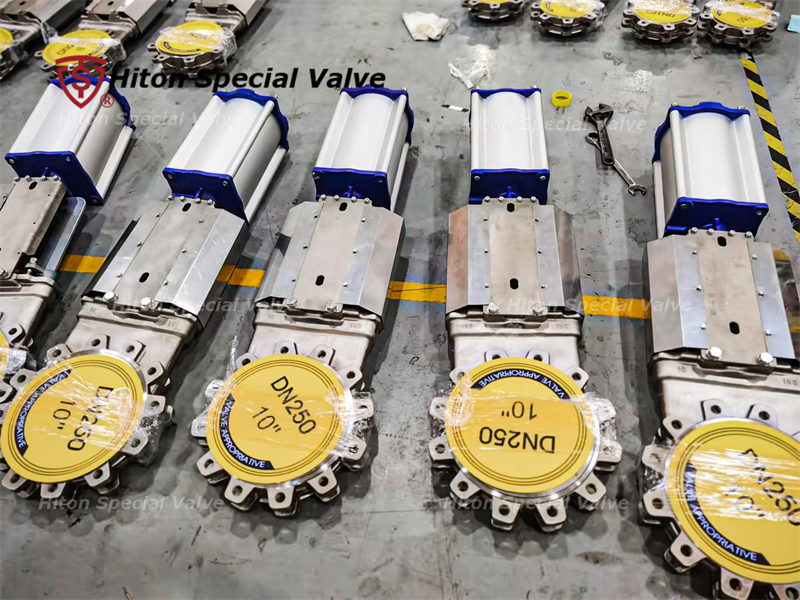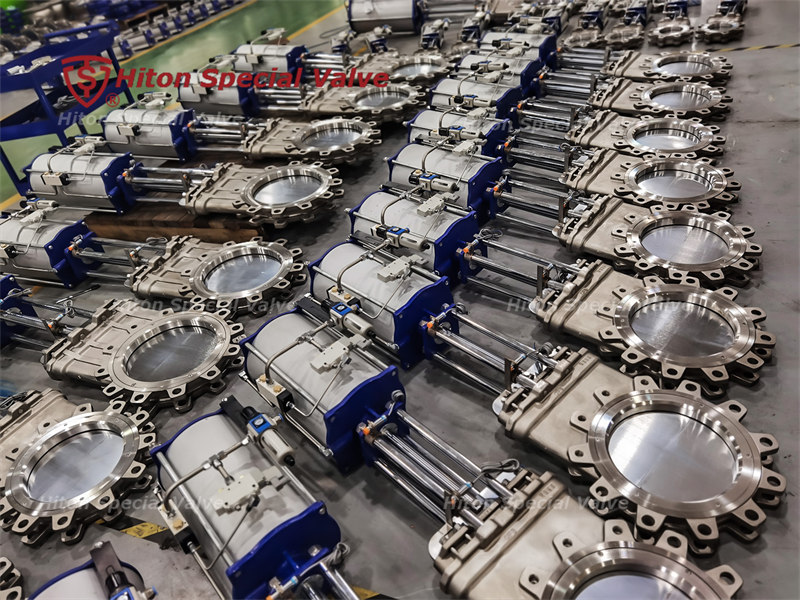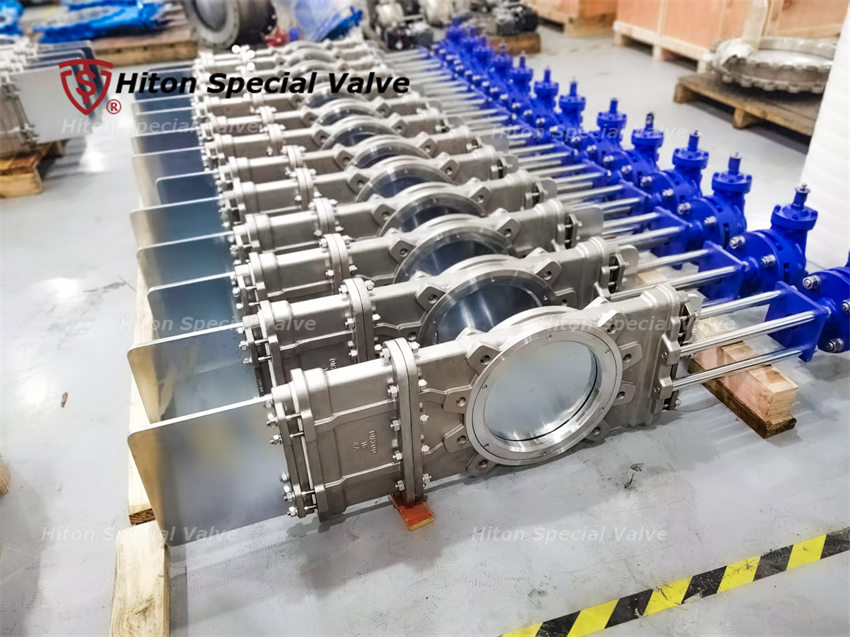A knife gate valve is a type of valve used to control the flow of fluids, and its working principle is relatively simple yet effective. Here is how a knife gate valve operates:
Valve Structure: A knife gate valve typically consists of a flat or blade-shaped valve disc and a valve seat. The valve disc is usually a flat plate or blade that can slide along the axis of the pipeline to control the flow of fluid.

Opening and Closing: When the knife gate valve is in the open position, the valve disc is moved inside the pipeline, allowing fluid to flow freely. When the knife gate valve needs to be closed, the valve disc is moved to the closed position within the pipeline, thereby blocking the flow of fluid.

Handle or Actuator: Knife gate valves are usually equipped with a manual handle or an automatic actuator to control the movement of the valve disc. In manual operation, the handle is rotated or moved to open or close the valve disc. In automatic operation, electric, pneumatic, or hydraulic actuators are commonly used.
Sealing Performance: Knife gate valves typically offer good sealing performance, especially when in the closed position. This helps prevent fluid leakage or retention within the pipeline.

Applications: Knife gate valves are suitable for applications where rapid shutoff of fluid flow is required, and where high sealing performance is necessary. They are commonly used in industries such as chemical processing, mining, wastewater treatment, power plants, and others.

In summary, the working principle of a knife gate valve is based on the movement of the valve disc to control the flow of fluid. They are widely used in industrial applications due to their reliability and sealing performance, especially in situations where rapid shutoff of fluid flow is needed.


















